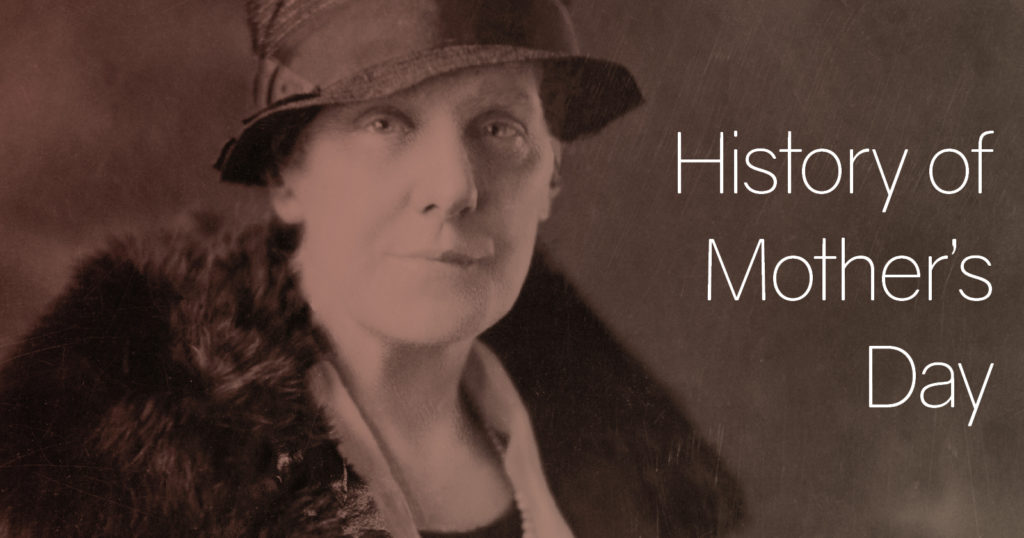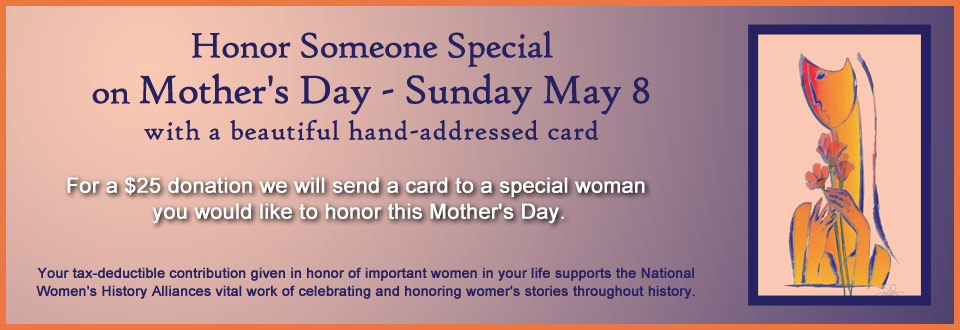
Quiz: Mother’s Day began
A. In 1858, when Ann Jarvis, a young Appalachian homemaker, organized “Mother’s Work Days” to improve the sanitation and avert deaths from disease-bearing insects and seepage of polluted water.
B. In 1872, when Boston poet, pacifist and women’s suffragist Julia Ward Howe established a special day for mothers –and for peace– not long after the bloody Franco-Prussian War.
C. In 1905, when Ann Jarvis died. Her daughter, Anna, decided to memorialize her mother’s lifelong activism, and began a campaign that culminated in 1914 when Congress passed a Mother’s Day resolution.
The correct answer: All of the above.
Each woman and all of these events have contributed to the present occasion now celebrated on the second Sunday in May.
The cause of world peace was the impetus for Julia Ward Howe’s establishment, over a century ago, of a special day for mothers. Following unsuccessful efforts to pull together an international pacifist conference after the Franco-Prussian War, Howe began to think of a global appeal to women.
“While the war was still in progress,” she wrote, she keenly felt the “cruel and unnecessary character of the contest.” She believed, as any woman might, that it could have been settled without bloodshed. And, she wondered, “Why do not the mothers of mankind interfere in these matters to prevent the waste of that human life of which they alone bear and know the cost?”
Howe’s version of Mother’s Day, which served as an occasion for advocating peace, was held successfully in Boston and elsewhere for several years, but eventually lost popularity and disappeared from public notice in the years preceding World War I.
 Go to the store HERE for the card and other products.
Go to the store HERE for the card and other products.
For Ann Jarvis, also known as “Mother Jarvis,” community improvement by mothers was only a beginning. Throughout the Civil War she organized women’s brigades, asking her workers to do all they could without regard for which side their men had chosen. And, in 1868, she took the initiative to heal the bitter rifts between her Confederate and Union neighbors.
The younger Anna Jarvis was only twelve years old in 1878 when she listened to her mother teach a Sunday school lesson on mothers in the Bible. “I hope and pray that someone, sometime, will found a memorial mother’s day,” the senior Jarvis said. “There are many days for men, but none for mothers.”
Following her mother’s death, Anna Jarvis embarked on a remarkable campaign. She poured out a constant stream of letters to men of prominence — President William Taft and former President Theodore Roosevelt among them — and enlisted considerable help from Philadelphia merchant John Wannamaker.
By May of 1907, a Mother’s Day service had been arranged on the second Sunday in May at the Methodist Church in Grafton, West Virginia, where Mother Jarvis had taught. That same day a special service was held at the Wannamaker Auditorium in Philadelphia, which could seat no more than a third of the 15,000 people who showed up.
The custom spread to churches in 45 states and in Puerto Rico, Hawaii, Mexico and Canada. The Governor of West Virginia proclaimed Mother’s Day in 1912; Pennsylvania’s governor in 1913 did the same. The following year saw the Congressional Resolution, which was promptly signed by President Woodrow Wilson.
Mother’s Day has endured. It serves now, as it originally did, to recognize the contributions of women. Mother’s Day, like the job of “mothering,” is varied and diverse. Perhaps that’s only appropriate for a day honoring the multiple ways women find to nurture their families, and the ways in which so many have nurtured their communities, their countries, and the larger world.
